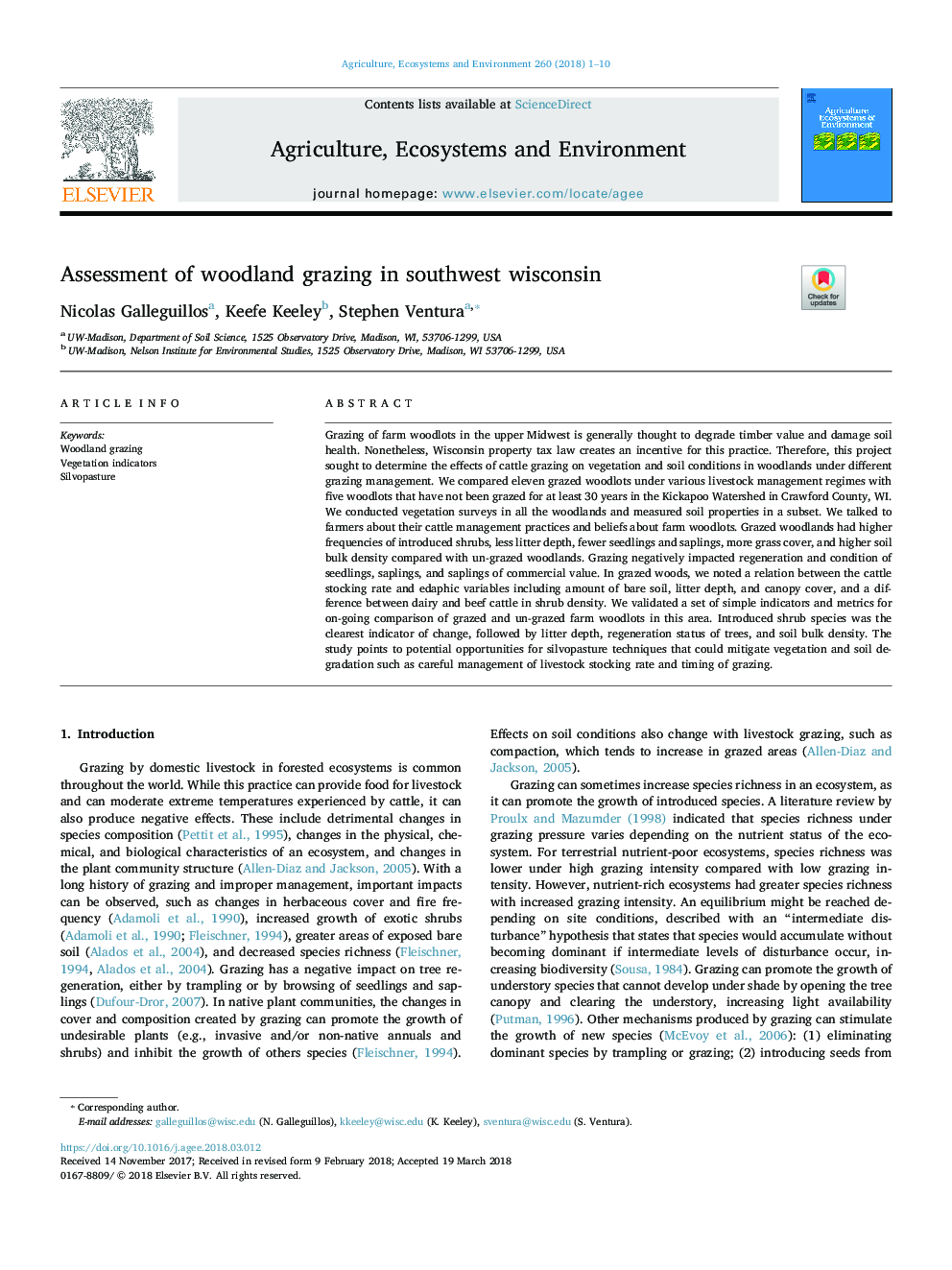| Article ID | Journal | Published Year | Pages | File Type |
|---|---|---|---|---|
| 8487081 | Agriculture, Ecosystems & Environment | 2018 | 10 Pages |
Abstract
Grazing of farm woodlots in the upper Midwest is generally thought to degrade timber value and damage soil health. Nonetheless, Wisconsin property tax law creates an incentive for this practice. Therefore, this project sought to determine the effects of cattle grazing on vegetation and soil conditions in woodlands under different grazing management. We compared eleven grazed woodlots under various livestock management regimes with five woodlots that have not been grazed for at least 30 years in the Kickapoo Watershed in Crawford County, WI. We conducted vegetation surveys in all the woodlands and measured soil properties in a subset. We talked to farmers about their cattle management practices and beliefs about farm woodlots. Grazed woodlands had higher frequencies of introduced shrubs, less litter depth, fewer seedlings and saplings, more grass cover, and higher soil bulk density compared with un-grazed woodlands. Grazing negatively impacted regeneration and condition of seedlings, saplings, and saplings of commercial value. In grazed woods, we noted a relation between the cattle stocking rate and edaphic variables including amount of bare soil, litter depth, and canopy cover, and a difference between dairy and beef cattle in shrub density. We validated a set of simple indicators and metrics for on-going comparison of grazed and un-grazed farm woodlots in this area. Introduced shrub species was the clearest indicator of change, followed by litter depth, regeneration status of trees, and soil bulk density. The study points to potential opportunities for silvopasture techniques that could mitigate vegetation and soil degradation such as careful management of livestock stocking rate and timing of grazing.
Keywords
Related Topics
Life Sciences
Agricultural and Biological Sciences
Agronomy and Crop Science
Authors
Nicolas Galleguillos, Keefe Keeley, Stephen Ventura,
